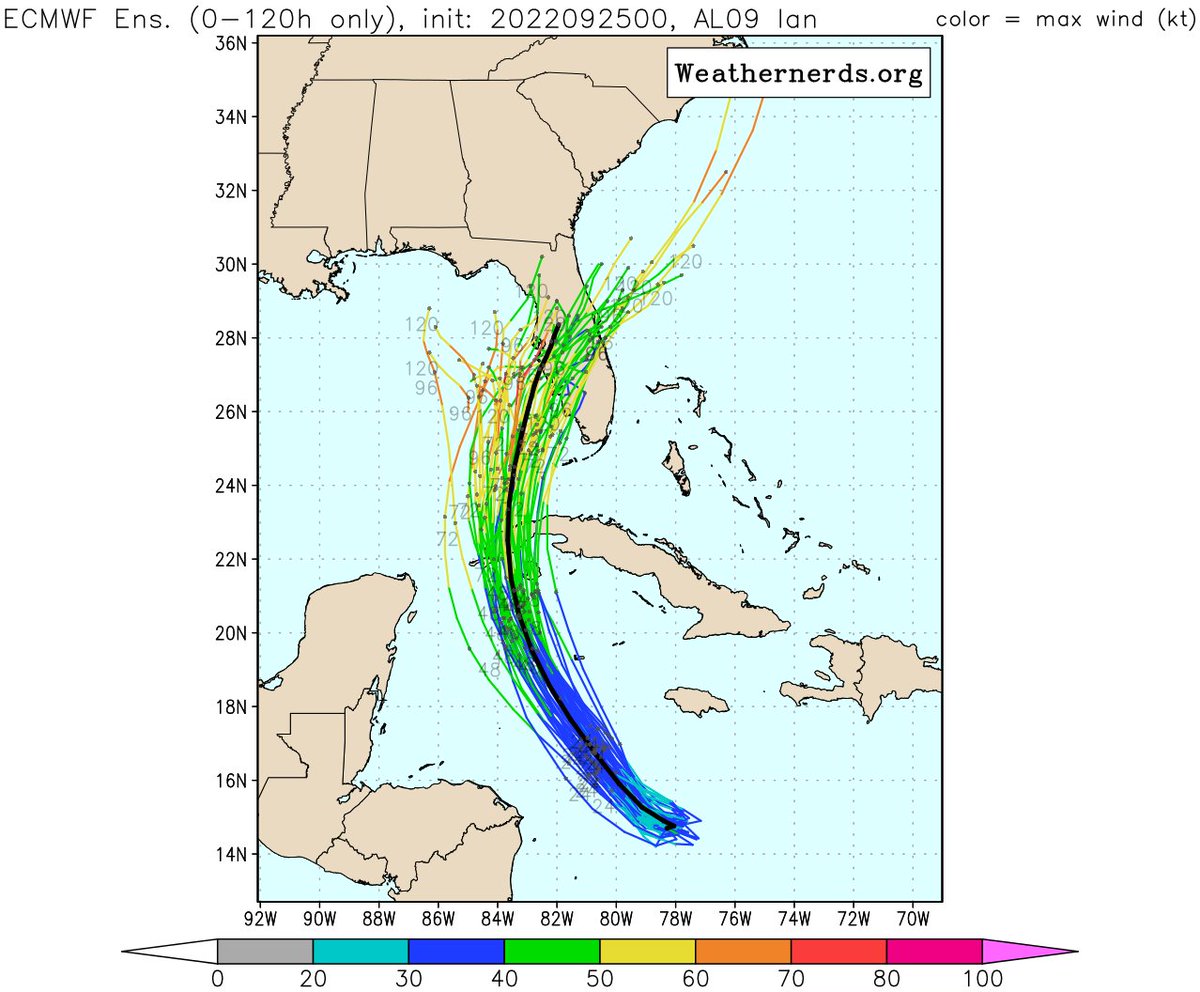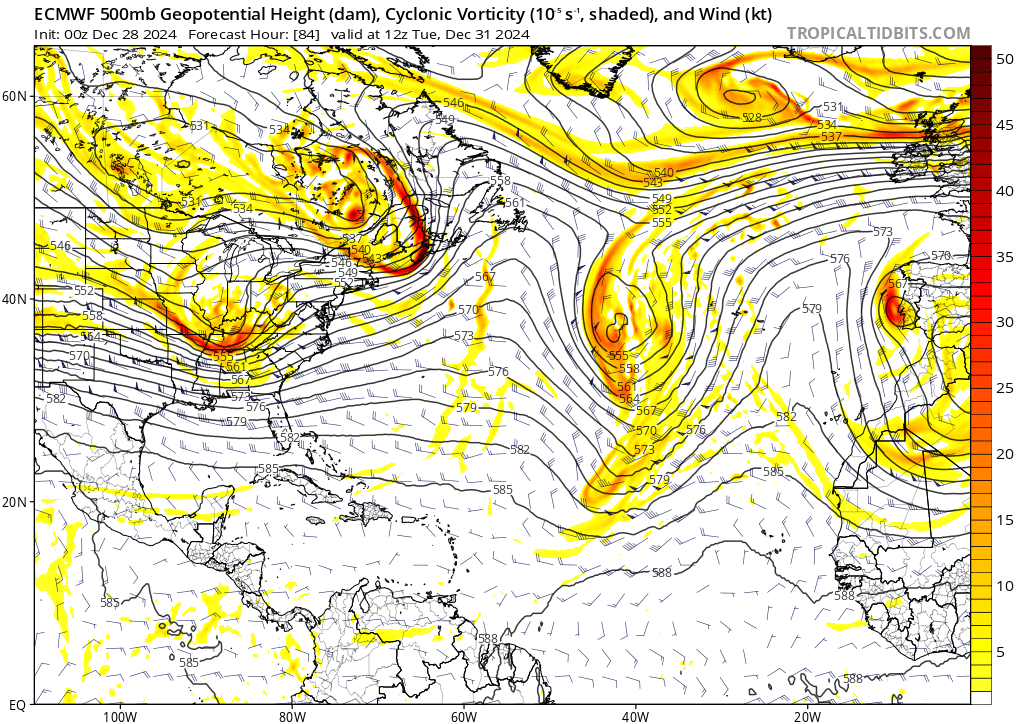1/6 Despite a NOAA G-IV Dropsonde Mission & Multiple extra weather balloon launches over the Continental US overnight,there remains a clear split in the model guidance with the GFS & some of the GFS based Hurricane models further west than than the Euro Models (ICON, UKMET,ECMWF) 



2/6 Studying the Upper Wind patter over N America over the next 3 days, a strong longwave trough over the Eastern US,extends south in both the GFS & ECMWF,but in the ECM the extension is stronger, this appears to be related to the strength of a Jet streak currently over NW Canada 



3/6 which is forecast to dive into the rear of the trough over the next 48 hrs & extend it southwards. In the ECM this jet streak is stronger than in the GFS which serves to amplify & extend the base of the trough S/SW by a sig amount. This allows the trough to have a greater 

4/6 say over the steering influence it exerts over #Ian as it comes North near western Cuba. The Sharper trough can pick Ian up and steer it NE towards the Florida West Coast. Both the ICON & ECMWF pick up on a potential severe impact near #TampaBayFL 



5/6 unfortunately this scenario if verified would allow #Ian to enter an area of strong Jet Right Entrance Divergence aloft & potentially intensify right up until landfall. If the GFS is correct & we get a less intense trough/Jet Streak moving south into the NE US then #IAn will 

6/6 move further N towards US GulfCoast & feel the effects of v.dry air & hostile shear which will not be present if #Ian right hooks into W Florida. It appears the strength of the Jet stream currently over N Canada & exp to dive S into the US is crucial to getting models to agre
• • •
Missing some Tweet in this thread? You can try to
force a refresh













































